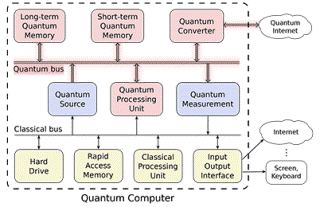Nov 7 2018
Researchers funded by the Swiss National Science Foundation have prepared a protocol for examining if quantum computer components are functioning as they should. This would be a crucial step in making the promise of quantum computing—including unparalleled computing power—a reality.
 Credit: Swiss National Science Foundation
Credit: Swiss National Science Foundation
Quantum computers are being designed not only by university teams but also teams working in Google, Microsoft, IBM, and D-Wave, a start-up company. Things are emerging quickly, says Nicolas Sangouard, SNSF Professor at the University of Basel. “In a few years at most, I expect the computing power of quantum computers to significantly outstrip the computing power of ordinary computers. We call that ‘quantum supremacy’.”
Sangouard and his co-workers recently demonstrated how to verify that these computers are ready for the purpose. For they are not just robust but also very delicate: some work at temperature extremes as low as 270 degrees below zero. The researchers’ method enables them to certify all the parts of a quantum computer—from short- and long-term memory, to information processors, to the converters necessary to link the computer to a secure quantum communications network. The protocol provides an extra benefit: it only uses the parts already in the computer, thus removing the need for extra devices. In theory, the protocol can be applied to any type of quantum computer, regardless of the technology behind it.
A machine that tests itself
“The power of quantum computers is what makes them difficult to certify”, says Sangouard. “Even the fastest ordinary computers are too slow to check the calculations made by such devices.” Also, quantum computers will ultimately be able to communicate with each other securely through an exclusive dedicated quantum communications network. So it is vital to ensure that they are not a weak link, says Sangouard.
That is why the study team has formulated a completely quantum certification process that utilizes the computer’s own building blocks. “We were inspired by Bell tests, which were devised by a physicist working at CERN in the 1960s”, says Sangouard. “Normally, these tests are used to check whether particles are behaving according to quantum rules. We modified the tests to enable them to check the operation of the various components of a quantum computer. Because such a device is basically capable of doing the tests, our procedure is very simple to set up and doesn’t require any special skills.”
What prompted the project was a seminar talk by a scientist invited to the University of Basel. The talk dealt with a complicated aspect of quantum physics, but we were motivated to translate it into a useful method for quantum computers. For me, that’s a perfect example of how a conference is not just a means of learning in a passive way but also offers significant opportunities to innovate.
Nicolas Sangouard, SNSF Professor, University of Basel.
The work was conducted at the University of Basel during an SNSF Professorship—a scheme that has since been swapped by the SNSF Eccellenza Professorial Fellowships—and at the University of Innsbruck, because of a mobility grant. Nicolas Sangouard is an associate member of the National Centre of Competence in Research (NCCR) “QSIT–Quantum Science and Technology”, an SNSF funding scheme. He also takes part in the project Quantum Internet Alliance, part of the new FET Flagship program “Quantum Technologies”.